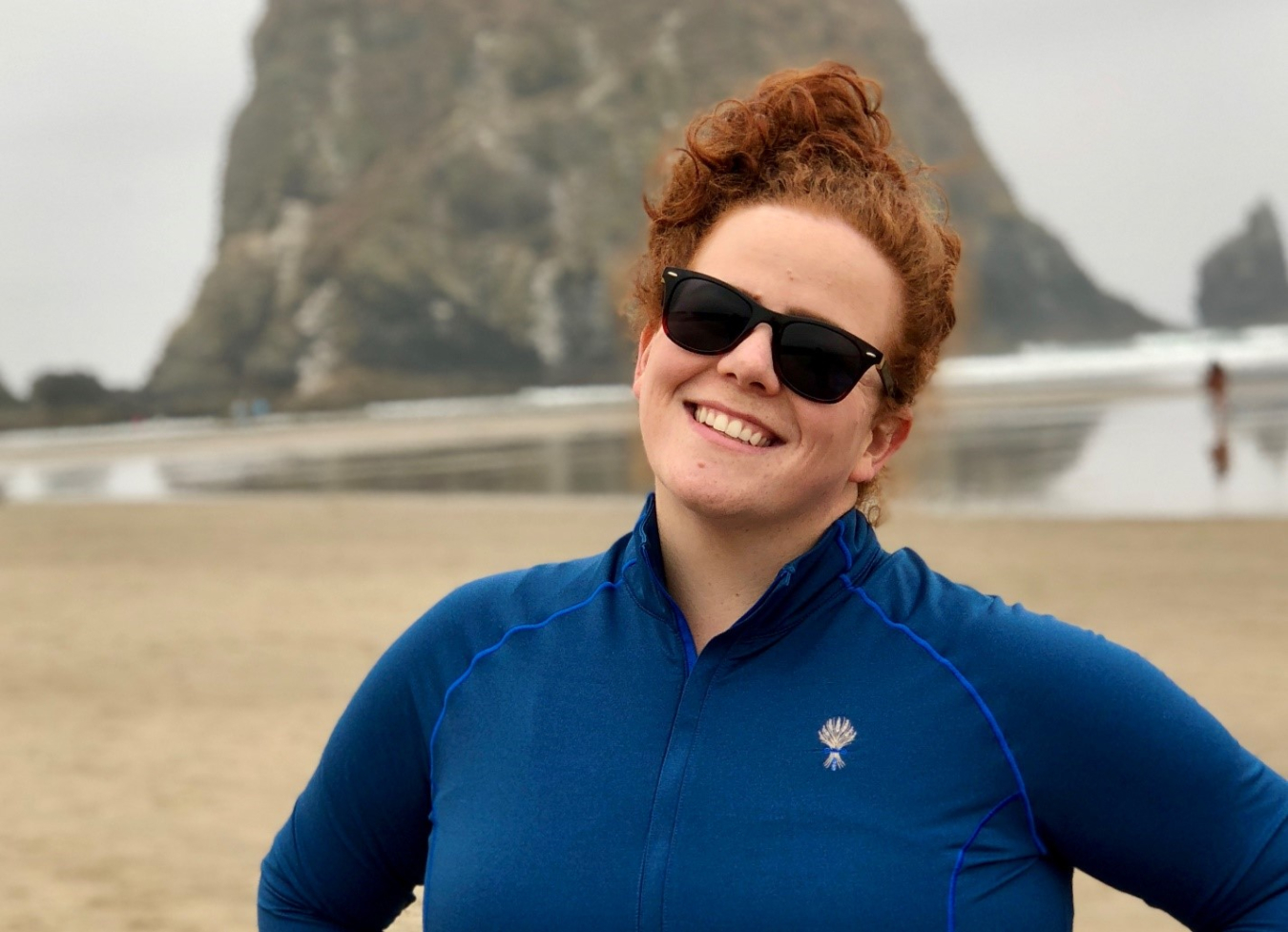Learn why Shannon Bates loves her job as a communications partner at Pacific Northwest National Laboratory.
June 23, 2020June is Ocean Month, and to celebrate STEM Rising is sharing profiles of Energy Department staff in ocean-related careers. Meet Shannon Bates.
My name is Shannon Bates and I’m a communications partner at Pacific Northwest National Laboratory. I started at PNNL as a high school intern and worked my way towards a career in communications. While working at PNNL, I obtained my bachelor degree in Digital Technology and Culture from Washington State University. Today, I get to do outreach for everything from the oceans, to vehicles and buildings.

What’s your favorite fact about the ocean?
I wish I could delegate this question to my seven-year old—he’s obsessed with oceanic facts! He shared just yesterday that jellyfish tentacles can reach up to 190 feet long. Horrifying! But one fact that I do cite often in my line of work, is that just 1/6th of the available wave energy along the five Pacific states could power more than five million homes in the United States.
What do you do to celebrate Ocean Month?
Things like this! Outreach is my job—and to celebrate Ocean Month, I’ll help enable more profiles like this one, I’ll create stories highlighting some of our work at PNNL, and I’ll put a lot of effort into making sure more people know about PNNL’s Marine Sciences Laboratory in Sequim, Washington.
What inspired you to work in water power?
When I first started in communications, I was writing about everything from nuclear waste to the power grid. But I fell in love with writing about some of the work funded by DOE’s Office of Energy Efficiency and Renewable Energy, especially water power. Some of my favorite stories to share surround PNNL’s work with fish. Our researchers work with and raise various species of fish for both marine energy and hydropower studies. I find their work fascinating, and the more fascinating it is, the more I enjoy communicating about it.
What do you do in your job?
My primary role is interfacing with researchers and PNNL leadership to understand what they need from a communications perspective; this includes anything from editing their journal articles, to amplifying their research on social media. I also get the opportunity, with our water power work in particular, to think outside of the box and pursue innovative, creative means of outreach. One thing we created this last year were virtual tours of PNNL’s Marine Sciences Laboratory and Aquatic Research Laboratory. You can experience those from PNNL’s YouTube channel, and our app will soon be available on the Oculus store for free!
What books or movies about the ocean do you recommend?
I’m going to defer to my seven-year old again! We received the book, Under Water, Under Earth, by Aleksandra Mizielinska and Daniel Mizielinski, as a gift a couple of years back and it remains a favorite today. Targeting grades 3-6, this coffee-table-worthy book has beautiful drawings and fascinating details surrounding both life under the ocean and on earth.
Follow your heart! I get to work with divers, oceanographers, fish ecologists, and more. They love what they do—as do I. If your desire is to work in, on, or around the ocean, then you should absolutely do it. And if you want to know more about job opportunities at PNNL, visit pnnl.gov/careers.
Read more Ocean Month profiles and get information about STEM Rising at www.energy.gov/STEM

